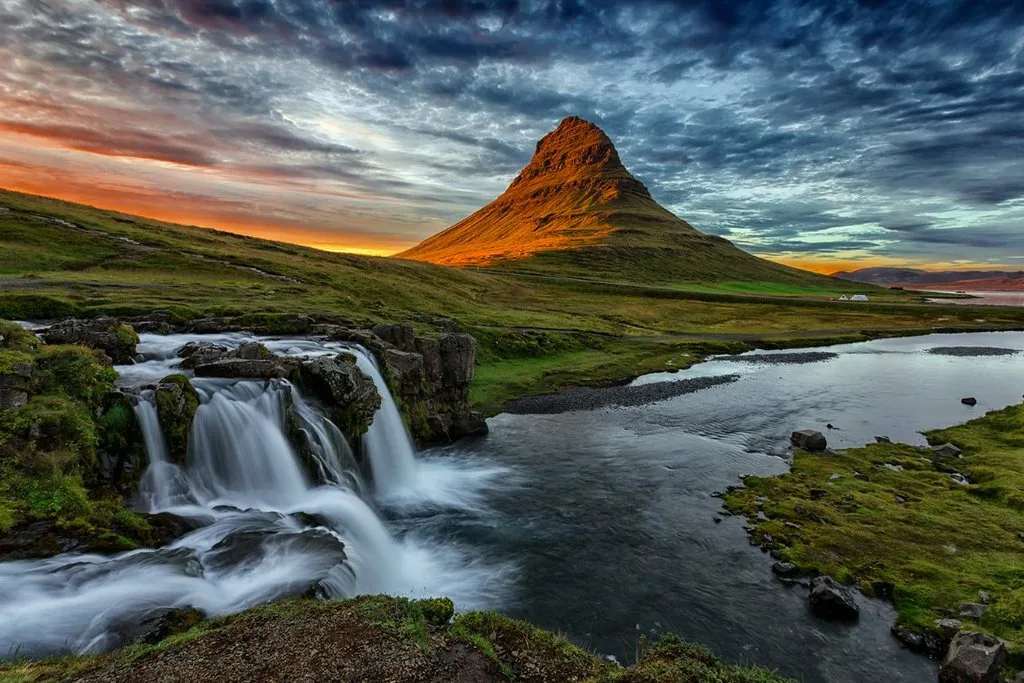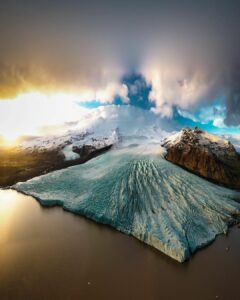
The Snæfellsnes Peninsula, often referred to as “Iceland in Miniature” due to its diverse landscapes, is home to one of the country’s most iconic natural wonders: the Snæfellsjökull volcano and glacier. This majestic glacier-capped volcano, located on the western tip of the peninsula, has fascinated visitors for centuries and was famously featured in Jules Verne’s novel Journey to the Center of the Earth.
Snæfellsjökull Volcano
Standing at 1,446 meters, Snæfellsjökull is an active stratovolcano with a glacier that covers its summit. On clear days, the volcano is visible from Reykjavík, about 120 kilometers away. The area surrounding Snæfellsjökull is part of Snæfellsjökull National Park, which offers a range of outdoor activities such as hiking, glacier tours, and exploring lava caves. The mystical energy attributed to the volcano makes it a popular spot for those interested in Icelandic folklore and legends.
Glacier Adventures
For those looking to get up close to the glacier, guided tours provide the opportunity to hike across the ice, explore crevasses, and learn about the geological history of the area. The glacier’s icy surface offers stunning views of the surrounding landscapes, and on a clear day, you can see all the way to the distant Westfjords.
Natural Beauty and Cultural Significance
Beyond the volcano and glacier, the Snæfellsnes Peninsula boasts dramatic coastlines, black sand beaches, and charming fishing villages. The area is also rich in cultural heritage, with historical sites and ancient sagas tied to the region. A visit to Snæfellsnes is not just an exploration of Iceland’s natural beauty, but also a journey into its deep-rooted history and mythology.
